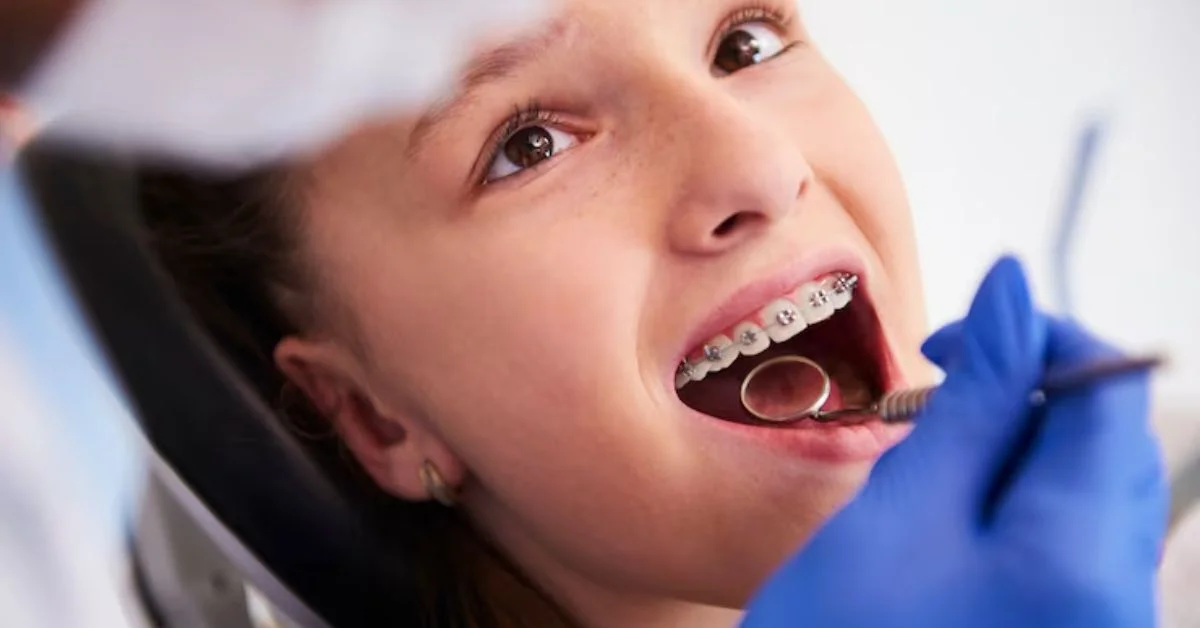For many, the decision to get braces is both exciting and daunting. The promise of a straighter, healthier smile is balanced by concerns over discomfort, cost, and time. But one thing is clear: the before and after of braces can be transformative. Whether you’re a teen preparing for your first orthodontic consultation or an adult considering realignment later in life, understanding the process, its outcomes, and its impact on health and self-image is essential.
In this article, we take a full-spectrum look at braces, from what prompts people to seek them to what they look like at every stage—and the long-term benefits they bring.
Why People Get Braces
Braces are not solely a cosmetic solution. While aesthetics often motivate patients, the primary function of braces is to correct malocclusions (misaligned bites), crowded or gapped teeth, and jaw discrepancies.
Common reasons include:
- Overbite or underbite
- Crossbite or open bite
- Crowded or crooked teeth
- Excessive spacing
- Speech or chewing difficulties
- Jaw pain and TMJ symptoms
Orthodontic treatment can prevent long-term dental complications such as enamel wear, gum disease, and temporomandibular joint disorders.
Types of Braces Available in 2025
Orthodontics has evolved dramatically. Today’s patients can choose from a variety of systems tailored to lifestyle and severity of correction:
1. Metal Braces
The traditional model: durable, visible, and cost-effective. Modern versions are sleeker and more comfortable.
2. Ceramic Braces
These function like metal braces but use tooth-colored or clear brackets, making them less noticeable.
3. Lingual Braces
Placed behind the teeth, lingual braces are invisible from the front but may cause temporary tongue discomfort.
4. Clear Aligners (e.g., Invisalign)
Removable, nearly invisible trays worn for 20–22 hours a day. Popular with adults and teens, especially for mild-to-moderate cases.
Each type comes with its own timeline, maintenance requirements, and aesthetic appeal. The right choice depends on personal preference and professional recommendation.
The “Before”: What to Expect Before Getting Braces
1. Consultation and Imaging
Orthodontists assess your teeth, jaw, and bite using:
- X-rays
- Photographs
- 3D digital scans
- Dental impressions
2. Treatment Plan
A personalized plan outlines:
- Type of braces
- Estimated duration
- Potential extractions
- Cost and insurance coverage
3. Preparation
Some patients may need spacers, extractions, or fillings before brackets are placed.
4. Expectations Setting
Your orthodontist will discuss:
- Potential discomfort
- Cleaning routines
- Adjustments and appointments
- Diet restrictions (especially with traditional braces)
This “before” stage is as much about mental preparation as clinical groundwork.
The “During”: Life with Braces
1. The First Week
- Mild soreness
- Adjusting to new textures
- Initial lisp or altered speech
- Eating soft foods recommended
2. Monthly Adjustments
Expect visits every 4–6 weeks for:
- Tightening wires
- Replacing elastics
- Monitoring progress
Each adjustment may bring temporary pressure, but it signals movement in the right direction.
3. Oral Hygiene Commitment
With braces, hygiene matters more than ever:
- Brush after every meal
- Use interdental brushes
- Rinse with fluoride mouthwash
- Consider a water flosser
Neglecting hygiene can lead to white spots, decay, or even delayed treatment.
4. Diet Changes
Avoid hard, sticky, or chewy foods. Common no-gos include:
- Popcorn
- Gum
- Ice
- Hard candies
Soft, nutritious foods that don’t stick to brackets are best.
The “After”: What Happens Once Braces Come Off
The moment of removal is emotional. It marks the end of an intense, often multi-year commitment. Here’s what happens:
1. Bracket and Adhesive Removal
- Typically takes 30–45 minutes
- Some pressure but no pain
2. Polishing and Final Photos
- Teeth are cleaned of glue
- Before-and-after images are captured
- A final assessment ensures alignment goals were met
3. Retainers Issued
Your orthodontist will provide a retainer:
- Removable or fixed
- Must be worn as instructed to maintain results
Neglecting to wear retainers can reverse months or years of progress.
Long-Term Benefits of Orthodontic Treatment
1. Aesthetics and Confidence
- A straight smile boosts self-image
- People often report improved social interactions
2. Oral Health Improvements
- Easier brushing and flossing
- Reduced risk of cavities and gum disease
- Balanced bite lowers risk of tooth wear
3. Speech and Chewing Correction
- Bite alignment improves function
- Reduced jaw strain
4. Facial Symmetry
In some cases, braces subtly enhance facial structure, especially in growing children.
Braces Before and After: Realistic Expectations
Not every transformation is dramatic—but even small changes can have significant impacts. Remember:
- Teeth move gradually
- Results depend on compliance (especially with elastics and retainers)
- Perfection isn’t the goal; functionality and harmony are
Orthodontists now use software to show projected outcomes, helping patients visualize their smile’s future before treatment even begins.
Innovations in Orthodontics (2025 and Beyond)
1. 3D-Printed Brackets and Aligners
More personalized, faster to fabricate, and often more comfortable.
2. Remote Monitoring
Apps and smart retainers track progress and minimize office visits.
3. AI-Based Treatment Adjustments
Orthodontic AI now helps predict and adjust treatment plans in real-time, enhancing precision.
4. Invisible Force Systems
New biomaterials offer gentler yet effective tooth movement.
Orthodontic care is now more comfortable, data-driven, and adaptable to lifestyle.
Psychological Impact: More Than Just Teeth
The “before and after” is not just physical. Patients often experience:
- Increased self-esteem
- Lower social anxiety
- Willingness to smile and engage
Particularly for teens and young adults, it can be a gateway to positive identity changes. Adults often describe it as a long-delayed self-investment.
Cost Breakdown and Insurance
Average Costs in 2025:
- Metal Braces: $4,000–$6,000
- Ceramic: $5,000–$7,000
- Aligners: $3,500–$6,500
Insurance Coverage:
- Most dental plans cover 25% to 50%
- Flexible Spending Accounts (FSAs) and HSAs can be used
Payment plans and financing are widely available. The key is long-term value—these aren’t a cosmetic expense, but a medical investment.
Conclusion
Braces are more than brackets and wires—they represent a journey of transformation. From initial consultation to retainer phase, the before-and-after experience with braces is both physical and emotional. Modern orthodontics in 2025 offers more options, comfort, and customization than ever before.
Whether you’re looking to correct a long-standing bite issue or simply want to feel confident in your smile, understanding the full landscape of braces—from the science to the psychology—empowers you to take the next step.
If you’re considering braces, know this: it’s not just about straight teeth. It’s about reclaiming function, confidence, and long-term oral health.
Frequently Asked Questions (FAQs)
1. How long do I need to wear braces?
The average treatment lasts 18 to 24 months, but varies based on the complexity of the case and patient compliance.
2. Will it hurt?
Mild discomfort is common, especially after adjustments. Most patients adapt quickly within a week or two.
3. Can adults get these?
Absolutely. Many adults opt for aligners or ceramic braces for discreet treatment options.
4. What happens if I don’t wear my retainer?
Teeth may shift back to their original positions. Consistent retainer use is crucial for maintaining results.
5. Are clear aligners as effective as traditional braces?
For mild to moderate cases, yes. Severe misalignments may still benefit more from fixed bracket systems.
For more information, click here.









